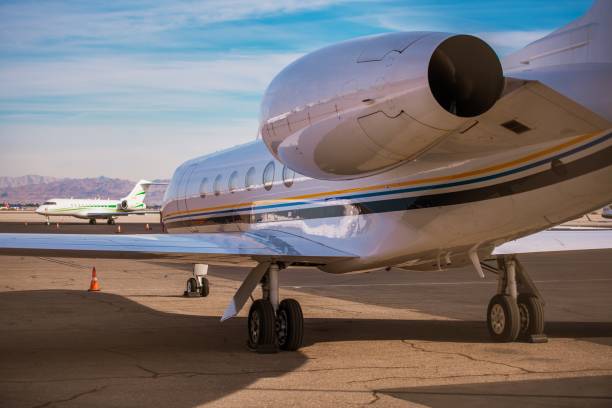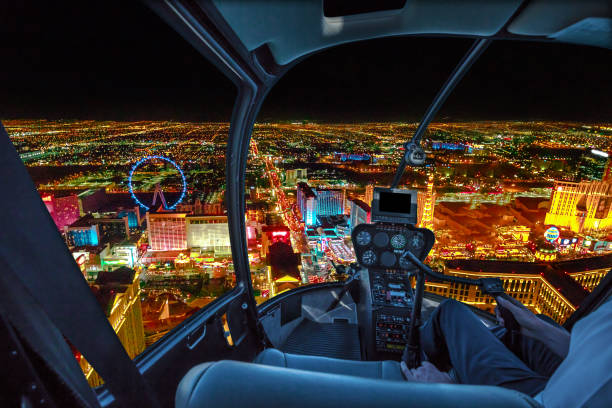Light Jet vs Long-Range Jet: Which to Choose for Executive Travel

When it comes to executive travel, the choice between a light jet and a long-range jet can significantly impact your business operations, comfort, and bottom line. The global air charter services market size was valued at $46.29 billion in 2023 and is projected to grow from $48.19 billion in 2024 to $80.65 billion by 2032, exhibiting a CAGR of 6.65% during the forecast period. Understanding the nuances between different aircraft categories has never been more crucial for business leaders making strategic travel decisions through FAA-certified operators.
Understanding the Aircraft Categories
What Defines a Light Jet?
Light jets, also known as entry-level jets, represent the most accessible segment of private aviation. As of 2024, more than 36% of all private jets owned globally are categorized as light jets. These aircraft typically accommodate 4-8 passengers and are designed for shorter to medium-range flights, making them ideal for regional business operations.
Key Characteristics of Light Jets:
- Range: 1,000-1,800 nautical miles non-stop range with full seats
- Flight Time: 2.5-5.5 hours
- Passenger Capacity: 4-8 passengers
- Typical Speed: 400-500 knots
- Cabin Height: Usually 60 inches or less, requiring adults to stoop while entering and exiting
- Runway Requirements: Can access shorter runways (3,000-4,000 feet)
Popular models in this category include the Cessna Citation CJ series, Embraer Phenom 300, and HondaJet Elite, all of which are commonly operated by FAA-certified charter operators.
What Defines Long-Range Jets?
Long-range jets, including super-midsize and heavy jets, are designed for transcontinental and international travel. These aircraft can fly non-stop across oceans and continents while providing luxury amenities that enhance productivity during extended flights.
Key Characteristics of Long-Range Jets:
- Range: 4,000-7,700+ nautical miles
- Flight Time: 8-16+ hours
- Passenger Capacity: 8-19 passengers
- Typical Speed: 500-610 knots
- Cabin Height: 6+ feet with full standing capability
- Runway Requirements: Longer runways needed (5,000-6,000+ feet)
Notable examples include aircraft from the Gulfstream G series, Bombardier Global family, and Dassault Falcon 7X/8X series, all maintained and operated to the highest safety standards by certified operators.
Cost Analysis: Operating Expenses and Acquisition
Light Jet Operating Costs
The financial advantage of light jets is immediately apparent in both acquisition and operational costs. Light cabin jets can be operated for roughly $$1,000–$$1,800 per hour in many cases, with the most efficient examples even below that range.
Specific Operating Cost Examples (per flight hour):
- Cirrus Vision SF50: $662 per hour (most economical)
- Eclipse 550: $889 per hour
- Cessna Citation Mustang: $1,015 per hour
- HondaJet HA-420: $1,135 per hour
- Embraer Phenom 100E: $1,152 per hour
The overall cost of owning a Light Jet is approximately $1.45 million per year, assuming your operation flies 400 hours annually. This includes fixed costs such as insurance, maintenance reserves, and crew expenses.
Long-Range Jet Operating Costs
Long-range jets represent a significant financial commitment, with operating costs reflecting their enhanced capabilities and complexity. Operating costs for the most efficient midsize jets generally fall from $2,200 to $3,000 per hour. For true long-range aircraft, costs increase substantially:
Long-Range Operating Cost Examples:
- Cessna Citation X+: $4,098.69 per hour
- Dassault Falcon 8X: $3,803.75 per hour
- Gulfstream G650: $4,843.16 per hour
Medium to large aircraft cost upwards of $650,000 in fuel costs for 200 hours of flying, whereas smaller aircraft cost anywhere between $113,000 and $127,000 for the same amount of flying.
Performance and Operational Comparison
Speed and Efficiency
While light jets typically cruise at speeds between 400-500 knots, long-range jets can achieve 500-610 knots. This speed differential becomes significant on longer routes, where time savings can justify the increased operating costs.
Range Capabilities and Mission Profiles
Most flights in the light jet category last less than 1.5 hours. This makes them ideal for:
- Regional business travel within 1,000-mile radius
- Same-day return trips
- Accessing smaller airports closer to destinations
- Cost-sensitive operations requiring frequent flights
Long-range jets excel in different scenarios:
- Non-stop transcontinental flights
- International business operations
- Multi-city tours without fuel stops
- Executive teams requiring mobile office capabilities
Airport Accessibility
One of the advantages of Light Jets is their ability to land on shorter runways, making them ideal for accessing more remote airports. This capability can bring executives closer to their final destinations, often saving ground transportation time that might otherwise offset the speed advantages of larger aircraft.
Comfort and Amenities Analysis
Light Jet Interior Experience
In a Light Jet, expect a cozy yet comfortable interior. They typically feature club seating, fold-out tables, and a small refreshment center. While they might not offer stand-up cabins, they ensure a comfortable flight experience for their size.
Modern light jets incorporate advanced avionics and connectivity features, though space constraints limit amenities compared to their larger counterparts.
Long-Range Jet Luxury Experience
Midsize Jets, with their larger cabins, take luxury up a notch. Passengers can enjoy a stand-up cabin, a fully equipped galley, more lavatory space, and sometimes even a sleeping area. Entertainment systems, Wi-Fi connectivity, and more extensive baggage compartments are other added benefits.
Safety Considerations and Standards
Safety remains the paramount concern in business aviation, with all reputable operators maintaining rigorous standards. The NBAA Safety Committee has identified the association's Top Safety Focus Areas for 2024, highlighting multiple priorities in support of a greater commitment to business aviation safety standards.
Industry Safety Focus Areas
Controlled flight into terrain (CFIT) has occurred in more than 10 percent of general aviation accidents and fatalities and continues to be a top 4 defining event among business and general aviation accidents. However, modern aircraft in both categories feature advanced safety systems:
- Enhanced Ground Proximity Warning Systems (EGPWS)
- Traffic Collision Avoidance Systems (TCAS)
- Advanced weather radar
- Synthetic vision technology
Both light and midsize jets have commendable safety records. Advanced avionics, continuous upgrades, and rigorous maintenance checks ensure passenger safety. While both categories adhere to stringent safety protocols, it's always advisable to research specific jet models and their safety histories when choosing an aircraft.
Market Trends and Future Innovations
Current Market Dynamics
As of mid-May 2024, private flying has surged, surpassing pre-pandemic levels seen in 2019 by an impressive 32.1%. This growth reflects increasing demand across both aircraft categories.
Fractional flight providers have seen an increase in flight hours, up 59% in the second quarter of 2024 compared to the same time in 2019. This trend indicates growing acceptance of shared ownership models as alternatives to full ownership.
Technological Advancements on the Horizon
The industry continues evolving with promising future innovations:
Artificial Intelligence Applications:
Artificial intelligence is playing an increasing role in predictive aircraft maintenance, helping operators identify service needs before they cause disruptions, delays, or worse, safety issues. These AI-powered systems represent the future of aviation maintenance and will likely become standard in the coming years.
Sustainable Aviation Fuels:
Environmental considerations are driving innovation in fuel technology, with both light and long-range aircraft being designed for compatibility with sustainable aviation fuels (SAF) as these become more widely available.
Enhanced Connectivity:
Future aircraft will feature even more advanced communication systems, though current models already offer significant connectivity improvements over commercial aviation.
Decision Framework: Choosing the Right Aircraft Through Expert Guidance
Mission Profile Assessment
Working with experienced aviation professionals through FAA-certified operators ensures you receive expert guidance in aircraft selection. Key considerations include:
For Light Jets:
- For short-haul flights, quick turnarounds, and cost-efficiency: Light Jets are your go-to.
- Regional business operations within 1,500 nautical miles
- Frequent flights with smaller passenger groups
- Access to smaller airports
For Long-Range Jets:
- For longer journeys, added luxury, and a spacious cabin: Opt for a Midsize Jet.
- International business requirements
- Transcontinental non-stop capability
- Mobile office functionality needs
Cost-Benefit Analysis
Ownership and operational costs vary between the two classes. Light Jets are generally more economical to operate. However, Midsize Jets, due to their larger size and extended range capabilities, naturally have higher operational costs. However, when considering the added amenities, increased range, and larger passenger capacity, many find the price difference justifiable, especially for longer journeys.
The Value of Professional Aviation Services
Expert Consultation Benefits
Rather than navigating aircraft selection alone, partnering with experienced aviation professionals provides several advantages:
- Safety Assurance: All operations conducted through FAA-certified operators
- Cost Optimization: Expert guidance ensures you select the most cost-effective aircraft for your specific mission
- Operational Efficiency: Professional flight planning and logistics management
- Risk Mitigation: Comprehensive safety protocols and insurance coverage
Concierge-Level Service
Premium aviation services extend beyond just transportation, offering:
- Ground transportation coordination
- Catering arrangements
- Hotel and meeting arrangements
- 24/7 support for itinerary changes
- Weather monitoring and alternative planning
Environmental Considerations and Sustainability
Light Jet Environmental Profile
These aircraft are favored in charter fleets for short hops because of their low fuel burn and overall economy. Smaller aircraft naturally consume less fuel per flight hour, though efficiency varies significantly by specific model and mission profile.
Long-Range Jet Environmental Considerations
While larger aircraft consume more fuel in absolute terms, they can be more efficient on a per-passenger-mile basis for longer flights. Many modern Midsize Jets are designed with fuel efficiency and reduced emissions in mind.
The industry continues developing more sustainable options, including improved engine efficiency and sustainable aviation fuel compatibility across both aircraft categories.
Market Outlook and Investment Considerations
Growth Projections
Polaris Market Research projects the business jet market to reach $41.82 billion by 2030, fuelled by a compound annual growth rate of 4.17%. The light jet segment, Polaris Market Research reports, accounts for the largest share of the market.
This growth reflects increasing recognition of private aviation's value proposition, particularly as businesses prioritize flexibility and efficiency in their operations.
Demographic Trends
Researchers say the number of people younger than 45 buying jets doubled between 2014 and 2024. At that point, it reached 29%. This trend toward younger ownership suggests evolving attitudes toward private aviation as a business tool rather than luxury item.
Making the Strategic Choice
The decision between light jets and long-range jets ultimately depends on your specific business mission profile and operational requirements. Light jets offer exceptional value for regional operations, providing cost-effective access to a vast network of airports while maintaining the speed and convenience advantages of private aviation.
Long-range jets become essential when your business operates on a global scale, where time zone management, non-stop international capability, and mobile office functionality justify the increased investment. The ability to conduct business while crossing oceans, arrive refreshed for critical meetings, and maintain productivity during extended flights can provide competitive advantages that exceed the additional operating costs.
The Professional Advantage
Rather than attempting to navigate these complex decisions independently, working with experienced aviation professionals through FAA-certified operators ensures optimal aircraft selection, safety compliance, and operational efficiency. This expert guidance helps maximize your aviation investment while minimizing risks and operational complexities.
The private aviation industry's continued growth and innovation ensure that both light jets and long-range jets will continue evolving to meet changing business needs. Whether you choose the regional efficiency of a light jet or the global reach of a long-range aircraft, partnering with professional aviation services provides the expertise and support necessary to maximize your investment's value.
By leveraging the knowledge and experience of certified operators, executives can focus on their core business activities while benefiting from safe, efficient, and cost-effective aviation solutions tailored to their specific requirements.
References
- Fortune Business Insights - Air Charter Services Market Size, Share & Industry Analysis
- NBAA - National Business Aviation Association Safety Focus Areas
- Global Air - Estimating Business Jet Operating Costs: Light Jets vs Large Jets
- Simple Flying - Top 5: The Light Private Jets With The Cheapest Operating Costs
- Business Aviation - Most Efficient Business Jets by Operating Cost (2025 Update)















